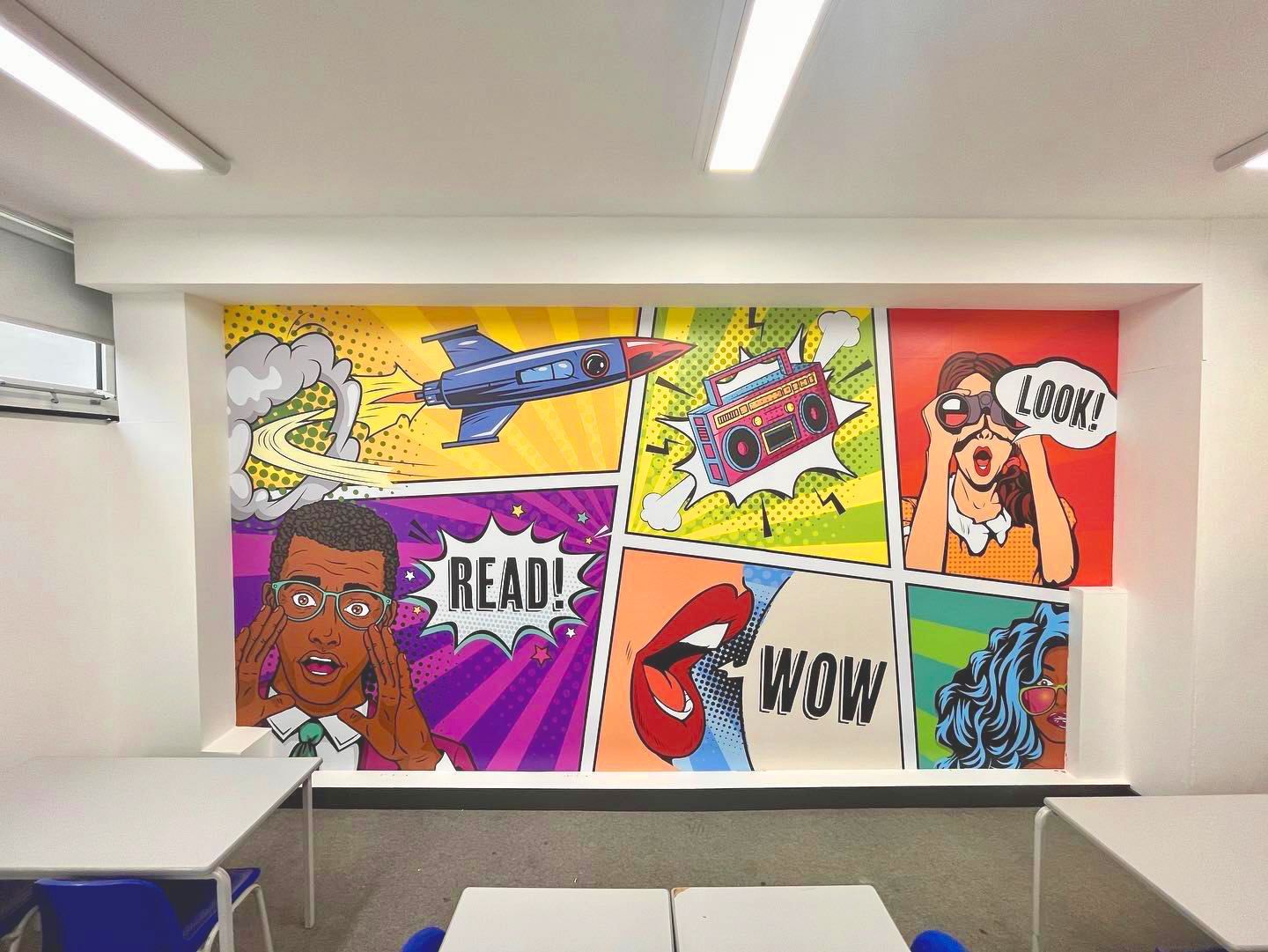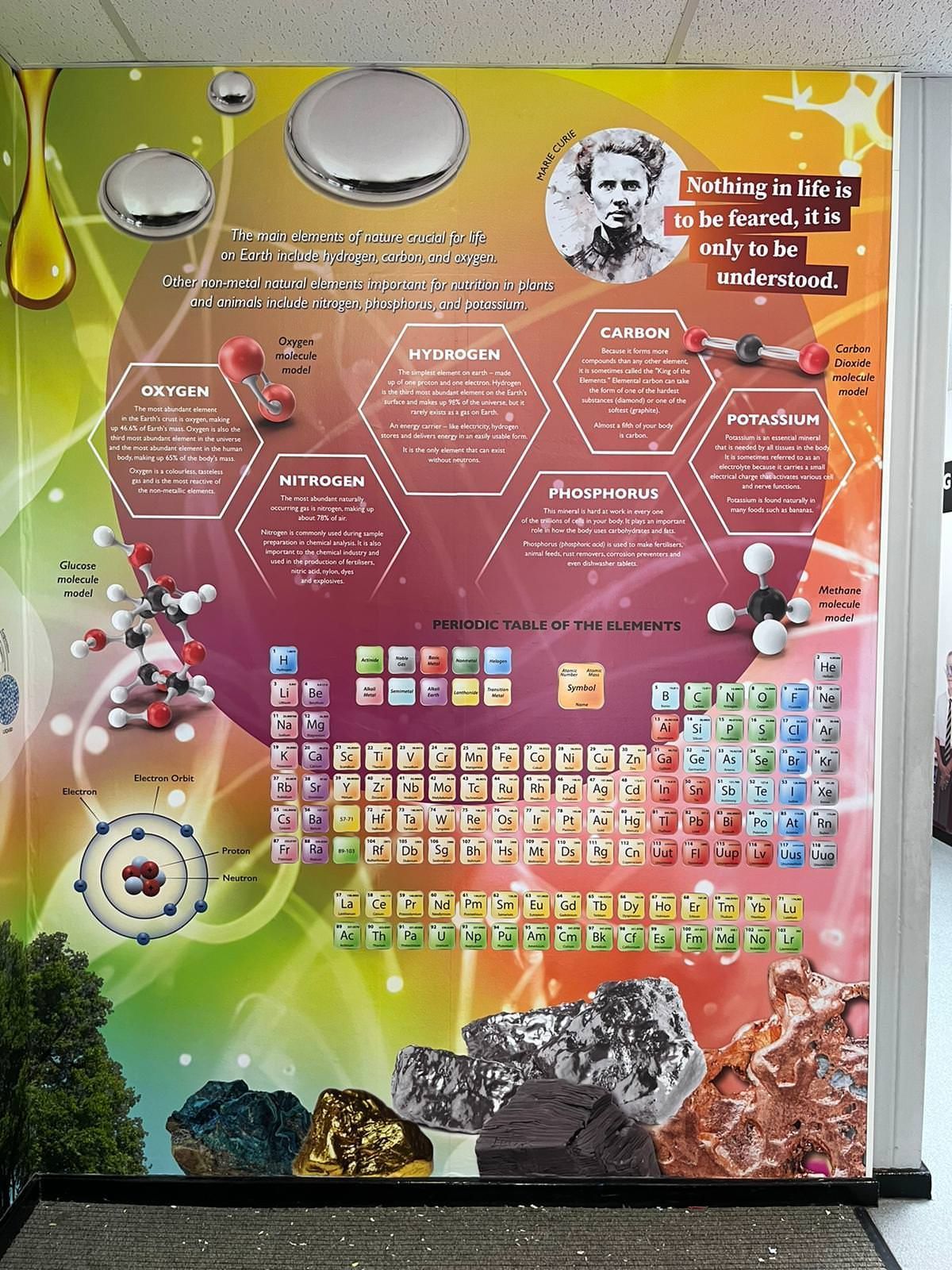Impact on pupils 29
Designing visually appealing school spaces with wall graphics can impact students' well-being and learning experience. Here are some key aspects to consider when creating environments that foster comfort, happiness and academic growth;

Critical Elements for Attractive Wall Graphics
1. Understanding Color Psychology;
- Opt for calming colours such as blues, greens, and pastels for areas dedicated to study or relaxation, such as libraries and reading corners.
- Consider using energising colours like yellows, oranges, and reds in spaces intended to boost energy and creativity, like art rooms and collaborative areas.
2. Incorporating Natural Elements;
- Integrating nature-inspired designs featuring elements like trees, flowers, landscapes, and water bodies plays a crucial role in creating a serene and welcoming ambience, enhancing the learning environment's role in establishing.
- Implement biophilic design principles by incorporating patterns and images that mimic forms to strengthen the connection with nature, ultimately reducing stress levels and enhancing focus.
3. Embracing Artistic Expression;
- Encouraging student involvement by showcasing their artwork in designated areas instils a sense of belonging and creates an inviting atmosphere, fostering a positive learning environment of pride and ownership.
Inspirational Messages: Include quotes and affirmations to boost students' morale and foster a mindset.

Language Arts:
- Literary Themes: Use detailed illustrations and rich colours to create murals that bring scenes from classic literature to life.
- Grammar Gardens: Design interactive, garden-themed graphics where each “flower” represents a different part of speech or literary device.
Art:
- Art Movements: Use visually rich depictions of various art movements, highlighting famous works and the styles of different eras.
- Creative Spaces: Provide spaces where students can contribute to evolving murals, allowing for a dynamic and ever-changing environment.
Implementation Strategy
1. Collaboration with Stakeholders:
- Engage the School Community: Involve students, teachers, and parents in the design process to ensure the graphics reflect the community’s values and preferences.
- Professional Artists and Designers: Partner with professional artists to create high-quality, visually stunning designs.
2. High-Quality Materials:
- Durability: Use durable and easy-to-clean materials to ensure the graphics remain vibrant and intact over time.
- Safety: Ensure all materials are safe, non-toxic, and appropriate for school environments.
3. Sustainable Practices:
- Eco-Friendly Options: Opt for sustainable materials and printing methods to minimise environmental impact.
- Highlight Sustainability: Incorporate themes of sustainability and environmental stewardship into the graphics.
4. Continuous Engagement:
- Update Regularly: Refresh the graphics periodically to keep the environment dynamic and engaging.
- Feedback Mechanism: Set up a system for gathering feedback from students and teachers to improve and adapt the designs continually.
5. Training and Orientation:
- Teacher Training: Provide training for teachers on using the wall graphics as part of their teaching tools.
- Student Orientation: Educate students on the purpose of the graphics and encourage them to interact with and appreciate the designs.
Examples of Aesthetic and Functional Wall Graphics
1. Reading Corners:
- Book-Themed Murals: Illustrate favourite book scenes or characters to create a magical reading environment.
- Comfortable Colors: Use soft, calming colours to make the space inviting and cosy.
2. Hallways:
- Inspirational Pathways: Decorate hallways with positive quotes, bright colours, and engaging visuals that inspire students as they move between classes.
- Educational Snippets: Include small facts or puzzles along the walls to stimulate curiosity.
3. Cafeterias:
- Healthy Eating Murals: Design graphics that promote healthy eating habits with colourful illustrations of fruits, vegetables, and balanced meals.
- Global Cuisine: Celebrate cultural diversity by showcasing different cuisines and their history.
By integrating these design principles and strategies, schools can create aesthetically pleasing spaces that enhance the visual appeal of the environment and contribute to students' overall well-being and learning experience.










